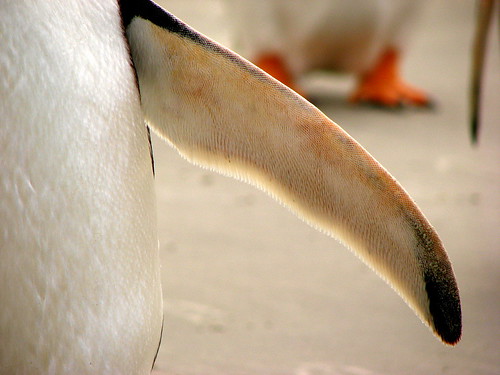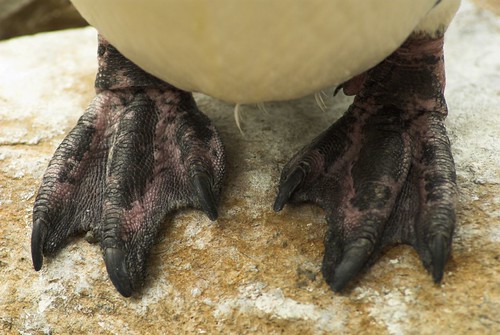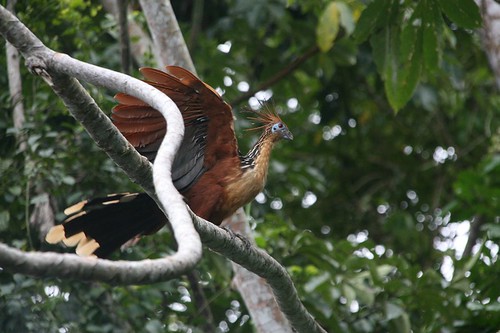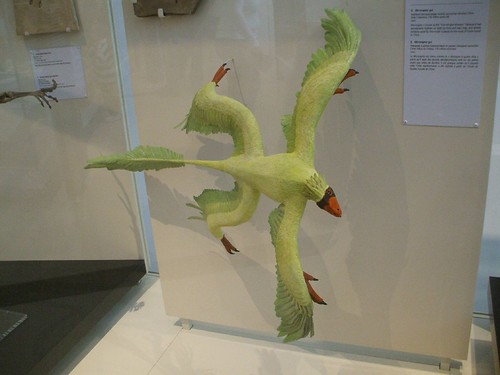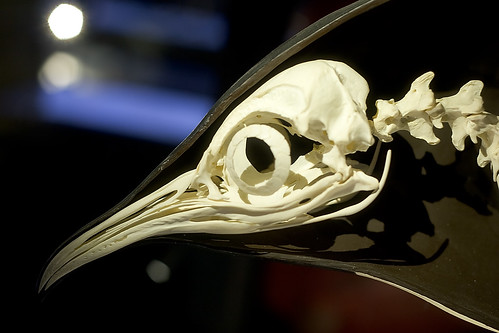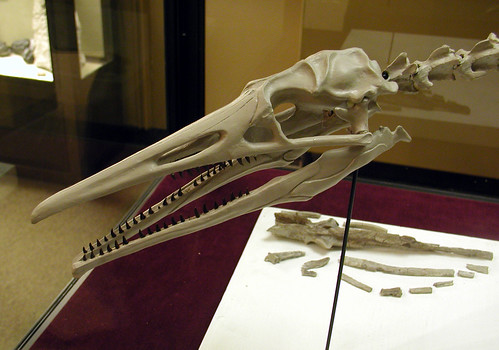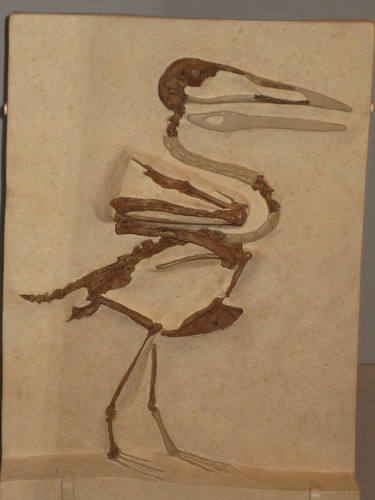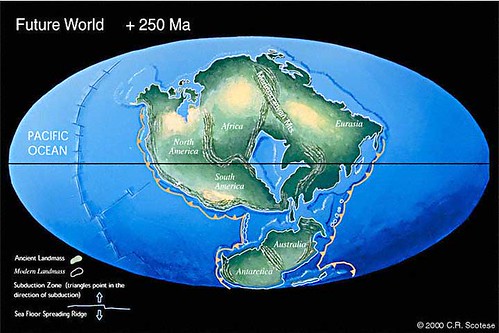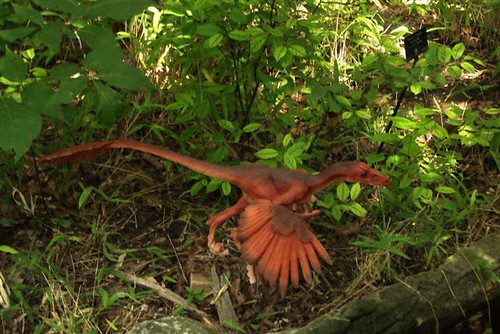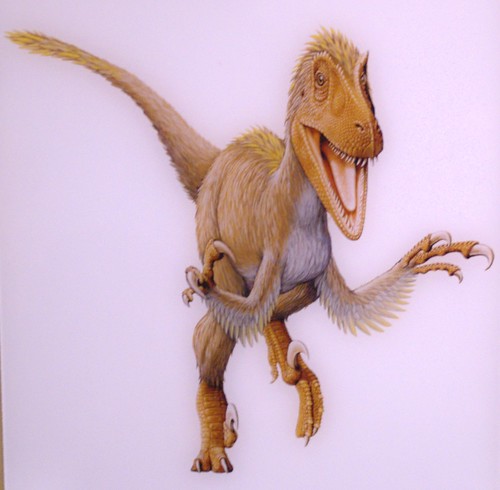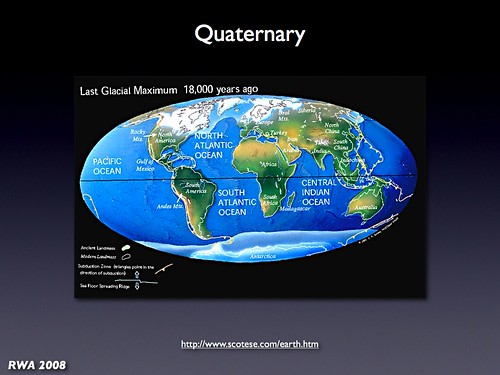
Sunday, November 30, 2008
Friday, November 28, 2008
Erect-crested penguin (Eudyptes sclateri)
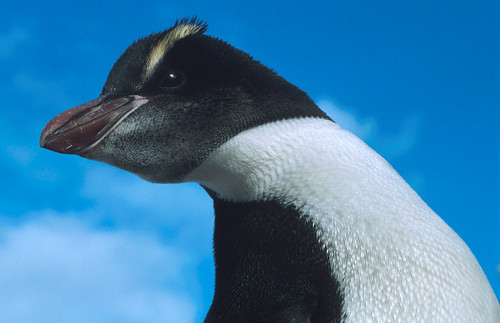
Facts
Kingdom Animalia
Phylum Chordata
Class Aves
Order Sphenisciformes
Family Spheniscidae
Genus Eudyptes (1)
Size Height: 60 cm (2)
Weight 4 kg (3)
Status
Classified as Endangered (EN) on the IUCN Red List 2006 (1).
Description
Erect-crested penguins are perhaps some of the most mysterious of all penguin species (4). This species is one of the largest of the crested penguins and shares with the Fiordland and Snares crested penguins the distinctive feature of an upward-sweeping crest of long, yellow brush-like feathers above each eye, extending from the base of the bill to the top of the head (4) (5). Unlike other crested penguins, however, the erect-crested penguin is able to raise and lower these stiff crest feathers (4). With its black back and white belly, this species sports the classic penguin ‘tuxedo look'. The upper sides of the wings are black with a white edge and the lower sides are white with a black patch at the tip. Males are generally larger than females, and both sexes have long, slender beaks that are dark brown-orange in colour (3).
Range
The majority of the breeding population occurs on the Bounty and Antipodes Islands, with smaller numbers on the Auckland and Campbell Islands, New Zealand. The non-breeding winter distribution is spent at sea in the sub-Antarctic oceans, although the exact location is unknown (6).
Habitat
Nests are constructed in large, dense colonies on rocky terrain, often without substantial soil or vegetation, up to 75 m above sea level (2).
Biology
The erect-crested penguin is an extremely social bird that breeds in large, raucous colonies of several thousand pairs, usually alongside rockhopper penguins (Eudyptes chrysocome) (4) (6). This species uses a number of displays and vocalisations, utilised particularly in the courtship and breeding season and in aggressive territorial behaviour during mate matching or when defending nesting sites (3) (6). Courtship displays include an enthusiastic greeting with an open bill, vertical head swinging, trumpeting, quivering, bowing and preening (3). Aggressive displays include use of the crests, growling and barking, while direct fighting involves twisting of locked bills or biting of the enemy on the neck while beating them with the flipper (3) (6).
Males usually return to the breeding site in September, and compete fiercely for prime nesting sites (6) (7). The females join the males two weeks later and work together to construct nests made of mud, stones and grass (3). Two eggs are laid in early October, although the first egg, which is noticeably smaller than the second, is usually lost (4) (6). The second egg is up to twice as large as the first, and is the only one seriously incubated (5). The male and female take turns incubating the egg for about 35 days (3) (6). After hatching, the chicks are fed regurgitated food by the female until they fledge in February. For three to four weeks the male stands guard without food while the female forages and returns daily to feed the chick (3) (6). Adults return to the sea for the (austral) winter after moulting in March (3) (7).
Little is known about the feeding habits of the erect-crested penguin, but the main sources of food are thought to be krill and squid, occasionally supplemented by small fish (2) (6).
Threats
Although still fairly abundant, the erect-crested penguin is considered endangered because it is thought to have undergone significant declines of at least 50% over the last 45 years, a pattern that is only expected to continue. Furthermore, the species' very small and restricted breeding range leaves it particularly vulnerable (2). The reasons for this decline are not fully understood, but are believed to be associated with marine factors, as predation on land during the breeding season is unlikely to be significant, since there are no mammalian predators on the Bounty or Antipodes Islands, except for mice on the main Antipodes Island (2) (7).
Conservation
All the islands on which the erect-crested penguin is found are nature reserves and, as of 1998, became part a World Heritage site. Cattle and sheep were eradicated from Campbell Island in 1984 and 1992 respectively, and introduced brown rats (Rattus norvegicus) have also been successfully removed from Campbell Island (2).
Further Information
For more information on the erect-crested penguin see:
* International Penguin Conservation Working Group (IPCWG):
http://www.penguins.cl/erect-penguins.htm
* New Zealand Penguins:
http://www.penguin.net.nz/species/ecp/index.html
References
1. IUCN Red List (September, 2006)
http://www.iucnredlist.org
2. BirdLife International (November, 2006)
http://www.birdlife.org/datazone/species/index.html?action=SpcHTMDetails.asp&sid=3856&m=0
3. MarineBio (November, 2006)
http://marinebio.org/species.asp?id=648
4. Antarctic Connection (November, 2006)
http://www.antarcticconnection.com/antarctic/wildlife/penguins/erect_crested.shtml
5. New Zealand Penguins (November, 2006)
http://www.penguin.net.nz/species/ecp/index.html
6. Animal Diversity Web (November, 2006)
http://animaldiversity.ummz.umich.edu/site/accounts/information/Eudyptes_sclateri.html
7. International Penguin Conservation Work Group (IPCWG) (November, 2006)
http://www.penguins.cl/erect-penguins.htm
Fact sheet courtesy of Archive @
http://www.arkive.org/erect-crested-penguin/eudyptes-sclateri/info.html
Image credit: Dandyfine @ Flickr

Thursday, November 27, 2008
Wednesday, November 26, 2008
Why Don't Penguins Feet Freeze?

Penguins have two areas where their body is very poorly insulated and where they can lose a lot of heat, these are their flippers and their feet. These regions give penguins at the same time a problem and a solution. A problem because of the heat loss, and a solution because they can be used for cooling down. It's all well and good being brilliantly insulated, but when you use a lot of energy and so generate heat, or the temperature rises, not being able to lose that heat becomes a big disadvantage in itself.
The solution is really quite elegant. The muscles that operate feet and flippers are not located in the feet and flippers, but deeper in the warmer regions of the penguins body. The feet and flippers are moved by tendons that pass through them and attach to toes etc. like a sort of remote operation by wire or string. This means that it doesn't matter if the feet and flippers get really cold as they can still be operated normally by regions that are fully functional and at normal body temperature.
Penguins have a heat-exchange blood-flow to these regions. The warm blood entering the feet or flippers flows past cold blood leaving so warming it up in the process and cooling the blood entering at the same time. Blood in these parts is significantly colder than in the rest of the body. By the time the blood re-enters the rest of the body it has been warmed up and so doesn't have so great an effect on the core body temperature.
Penguins feet are never allowed to get below freezing point, blood flow is finely adjusted so that they are kept just above. When it gets very cold, the feet are covered by the feathers and fat layer of the body so they are not exposed to cooling winds. So while a man standing barefoot on ice would quickly get frostbitten, penguins can do so all their lives with no damage at all.
At low temperatures or when in the sea, the blood flow to feet and flippers is very low anyway so reducing heat loss further. When the penguin needs to lose heat quickly, the blood flow to these extremities is increased and so lots of warm blood enters them which cools quickly so dumping excess heat rapidly and efficiently.
From Cool Antarctica @
http://www.coolantarctica.com/Antarctica%20fact%20file/science/cold_penguins.htm
Photo from Flickr

Tuesday, November 25, 2008
Image of the Day
This is a modern bird from Bolivia--looks a LOT like Archeopteryx.... uncannily so.

Monday, November 24, 2008
Sunday, November 23, 2008
Image of the Day
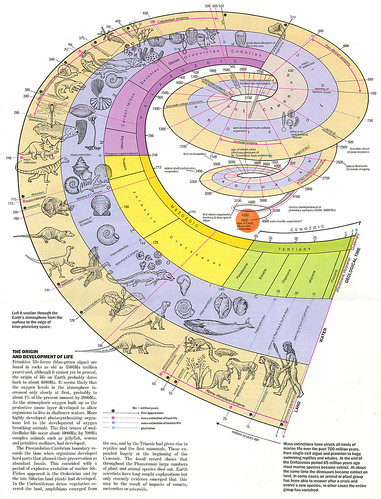
Origin & Development of Life Visual - Encyclopaedia Universalis, originally uploaded by visual think map.
Awesome, so much detail, land water, geological time, such subtle pastel colors, little line illustrations & sharp pink sectioning.
Appears on p.32 of the Unknown. (1993). Times Atlas of the world (concise edition) 6th Ed. Hammond World Atlas Corporation. First published in 1982, this book has become a classic of reference publishing around the globe. The acknowledgments section gives picture credit to "Encyclopaedia Universalis".
Featured here: visualthinkmap.ning.com/photo/photo/show?id=2168552%3APho...

Saturday, November 22, 2008
Friday, November 21, 2008
Image of the Day
Looking at this modern day cassowary, one can hardly doubt the existence of the avian-dinosaur connection.

Thursday, November 20, 2008
Good Article on Tring's Natural History Museum

A Little Bird Told Me
Outside the Natural History Museum's bird collection at Tring, a cat basks in the late afternoon sunshine.
Every now and again, a large bell attached to her collar tinkles as she adjusts her position.
The security guard tells me that Pusscat, the museum's resident feline, was fitted with this noisy accessory after apparently supplying the researchers with a few too many new birds.
The ornithology collection here is one of the largest in the world.
There are approximately one million eggs, 700,000 bird skins, 16,000 skeletons and 4,000 nests; not to mention a library packed with books, journals, paintings and notebooks.
Robert Prys-Jones, the head of the bird group, says that despite the vast number of items, nearly every one of them has a story to tell.
BBC News was given an exclusive peek behind the scenes by the ornithologists, and a chance to hear about some of their most prized specimens.
THE WORST JOURNEY
At first glance, the three emperor penguin eggs nestled within one of the many storage cupboards in the archives do not seem out of the ordinary.
But the tale that lies behind their collection is one of extraordinary human endeavour.
On 27 June 1911, zoologist Edward A Wilson, Henry Robertson "Birdie" Bowers and Apsley George Benet Cherry-Garrard set out in the Antarctic winter for a penguin colony at Cape Crozier.
At the time, it was thought that the embryos in the eggs might shed light on the evolutionary link between reptiles and birds.
However, as curator Douglas Russell explains in the video below, their journey was later to be described as the "worst journey in the world"
See the accompanying video HERE
An excerpt from an article from BBC News @
http://news.bbc.co.uk/2/hi/science/nature/7725086.stm

Image of the Day
Hesporornis gracilis
From the author:
I was a volunteer during the restoration of the Edmontosaurus skeleton at the University of Wisconsin Geology Museum in Weeks Hall in Madison in about 1989-1990 or so. I was privileged to sculpt out of clay and then cast in a hard type of plaster several bones that were missing and could not be cast out of any existing parts. During this time, the crew was also restoring a specimen of Hesporornis gracilis (If which name memory serves me right) which the Edmontosaurus team had previously excavated at another site in Kansas. This ancient, toothed, diving bird was lacking it's skull, so I was persuaded to sculpt a skull for it, based upon 19th century renderings of the skull of Hesporornic regalis, the more common variety. And here is the result, which I accomplished despite much cursing and whatever back in about 1990 or 1991. I haven't visited it for quite a few years now, until this last Saturday, during which I took a picture. Hey, no digital cameras in 1991. At least, none I could afford.

Wednesday, November 19, 2008
Image of the Day
Late Cretaceous (99.6-65.5 million years ago)
Kansas, USA

New Species of Extinct Penguin Discovered

New Zealand Yellow Eyed Penguin

A Pair of New Zealand Yellow Eyed Penguins

Waitaha penguin bones
The news is groundbreaking and exciting... this blog will list the news from several sources, but first, from the publisher of the findings and a link to download the paper.
wiinterrr
Long lost penguin benefits counterparts
19 Nov 2008
A new species of penguin - the first to become extinct due to human actions - has been discovered by scientists. What's more, the revelation has turned accepted wisdom about extinctions on its head. A team of researchers from the University of Otago discovered the new species - the Waitaha Penguin - whist studying New Zealand's iconic yellow-eyed penguin. The finding is published in the latest issue of Proceedings of the Royal Society B.
Surprisingly, the discovery reveals potential for some species to benefit from the extinction of others that are closely related, and from impacts of human predatory behaviour. Yellow eyed penguins are an endangered species, and those found on mainland New Zealand had previously been thought to be the remnants of a declining population. But scientists now understand the species to be more widespread than it was in the past, only moving to the South Island when its sister species and competitor was removed.
The researchers identified the new species using modern DNA analysis tools as well as by comparing the shape and structure of prehistoric penguin bones. Waitaha died out before 1500AD at a time when Polynesian settlers were colonising New Zealand.
The findings highlight how the biological world can respond quickly and dynamically to human impacts, and this kind of occurrence could turn out to be far more common than previously thought. Yet despite the discovery, the yellow-eyed penguin - with a total population of 7000 - remains vulnerable and conservation efforts should continue, say the authors.
News from The Royal Society @
http://royalsociety.org/news.asp?id=8129
A link to the paper: HERE
Click on pdf beneath the title to download.
~~~~~~~~~~~~~~~~~~~~~~~~~~~~~~~~~~~~~~~~~~~~~~~~~~~~~~~~~~~~~~~~~~~~~~~~~~~~~~~~~
New penguin species found in New Zealand
(PhysOrg.com) -- Australian and New Zealand researchers have used ancient DNA from penguin fossils to make a startling discovery that may change the way we view species extinctions.
A team from the University of Adelaide, the University of Otago and Canterbury Museum in New Zealand, has identified a previously unknown penguin species while conducting research on New Zealand’s endangered yellow-eyed penguin, one the world’s rarest penguin species and the subject of an extensive conservation effort.
The Waitaha penguin became extinct after Polynesian settlement but before 1500 AD, creating an opportunity for the yellow-eyed penguin to subsequently colonise the New Zealand mainland from its base in the sub-Antarctic islands.
“Our findings demonstrate that yellow-eyed penguins on mainland New Zealand are not a declining remnant of a previous abundant population, but came from the sub-Antarctic relatively recently and replaced the extinct Waitaha Penguin,” said team member Dr Jeremy Austin, deputy director of the Australasian Centre for Ancient DNA.
“Previous analysis of fossil records and anecdotal evidence suggested that the yellow-eyed penguin was more abundant and widespread in the past, but it now appears they have only been around for 500 years,” he said.
The team, led by University of Otago PhD student Sanne Boessenkool, identified the large-bodied Waitaha Penguin using ancient DNA from prehistoric bones, combined with traditional morphological techniques
“Competition between the two species previously prevented the yellow-eyed penguin from expanding northwards but environmental changes in the predator population, such as the severe decline of sea lions, may have facilitated their colonisation in the South Island.”
Researchers say the surprising finding demonstrates the unexpected ways in which species can respond to human and environmental impacts, and the role of extinction events in shaping our current environment.
Other University of Adelaide members of the research team include Dr Trevor Worthy and Professor Alan Cooper from the School of Earth and Environmental Sciences.
The team’s findings have been published this week in the Proceedings of the Royal Society B: Biological Sciences, an international biological research journal.
Provided by University of Adelaide via PhysOrg @
http://www.physorg.com/news146252612.html
~~~~~~~~~~~~~~~~~~~~~~~~~~~~~~~~~~~~~~~~~~~~~~~~~~~~~~~~~~~~~~~~~~~~~~~~~~~~~~~~
Scientists find new penguin, extinct for 500 years
By RAY LILLEY, Associated Press Writer Ray Lilley, Associated Press Writer – Wed Nov 19, 3:25 am ET
Wednesday, Nov. 19, 2008 by the New Zealand Science Media Centre shown is …
WELLINGTON, New Zealand – Researchers studying a rare and endangered species of penguin have uncovered a previously unknown species that disappeared about 500 years ago.
The research suggests that the first humans in New Zealand hunted the newly found Waitaha penguin to extinction by 1500, about 250 years after their arrival on the islands. But the loss of the Waitaha allowed another kind of penguin to thrive — the yellow-eyed species that now also faces extinction, Philip Seddon of Otago University, a co-author of the study, said Wednesday.
The team was testing DNA from the bones of prehistoric modern yellow-eyed penguins for genetic changes associated with human settlement when it found some bones that were older — and had different DNA.
Tests on the older bones "lead us to describe a new penguin species that became extinct only a few hundred years ago," the team reported in a paper in the biological research journal Proceedings of the Royal Society B: Biological Sciences.
Polynesian settlers came to New Zealand around 1250 and are known to have hunted species such as the large, flightless moa bird to extinction.
Seddon said dating techniques used on bones pulled from old Maori trash pits revealed a gap in time between the disappearance of the Waitaha and the arrival of the yellow-eyed penguin.
The gap indicates the extinction of the older bird created the opportunity for the newer to colonize New Zealand's main islands around 500 years ago, said Sanne Boessenkool, an Otago University doctoral student who led the team of researchers, including some from Australia's Adelaide University and New Zealand's Canterbury Museum.
Competition between the two penguin species may have previously prevented the yellow-eyed penguin from expanding north, the researchers noted.
David Penny of New Zealand's Massey University, who was not involved in the research, said the Waitaha was an example of another native species that was unable to adapt to a human presence.
"In addition, it is vitally important to know how species, such as the yellow-eyed penguin, are able to respond to new opportunities," he said. "It is becoming apparent that some species can respond to things like climate change, and others cannot. The more we know, the more we can help."
The yellow-eyed penguin is considered one of the world's rarest. An estimated population of 7,000 in New Zealand is the focus of an extensive conservation effort.
Source and first three images: Yahoo News @
http://news.yahoo.com/s/ap/20081119/ap_on_re_as/as_sci_new_zealand_new_penguin;_ylt=AqGsIME_rbzt06lx4Q0PgoZvaA8F
~~~~~~~~~~~~~~~~~~~~~~~~~~~~~~~~~~~~~~~~~~~~~~~~~~~~~~~~~~~~~~~~~~~~~~~~~~~~~~~~~~

Yellow Eyed Penguins

Yellow Eyed Penguin bones in comparison with its extinct cousin, the Waitha

DNA samples were taken from the feet of stuffed penguins
BBC NEWS
Rare penguin took over from rival
The arrival of humans in New Zealand may have led to the extinction of one penguin species - to the advantage of another.
Writing in the Royal Society journal Proceedings B, researchers say the extinct species lived in areas now home to New Zealand's rare yellow eyed penguin.
The extinction is thought to have occurred as recently as 500 years ago.
Early settlers wiped out many of New Zealand's unique animal species.
Scientists from the University of Otago, New Zealand, say they discovered the new species unintentionally when researching the genetic history of the yellow eyed penguin.
Although there are only around 7,000 yellow eyed penguins they have a wide range, being found on the sub Antarctic Campbell and Auckland islands as well as 700 km (435 miles) further north on the South-East coast of New Zealand's South Island.
DNA evidence
The discovery of the new species was something of a mystery according to Sanne Boessenkool, who led the research.
"They were around 10% smaller [than the yellow eyed penguin] they were very closely related, but we can't say if they had a yellow crown. There are no records of their existence from the local Maori people," she told BBC News.
DNA analysis compared modern penguins with samples from the feet of 100-year-old museum specimens and 500-year-old bones from both the sub-Antarctic islands and early Polynesian settlements on New Zealand's South Island.
The older bones found in South Island were smaller than those from the modern yellow eyed penguins and contained different DNA.
The DNA from the sub-Antarctic islands matched that of the modern birds.
This geographic variation and subtle differences in the structure and shape of the bones led the researchers to conclude that New Zealand's South Island had been home to a different, now extinct penguin and to designate this as a new species.
You get a complete shift in just a couple of hundred years
Sanne Boessenkool, University of Otago
Hunting Penguins
Sanne Boessenkool says it's hard to pinpoint exactly why the penguins became extinct but its likely they were eaten by Polynesian settlers who arrived from about 1280AD.
"The fact we find these bones in archaeological sites, villages or settlements, suggests hunting played a role. The birds were an easy target, easy to take and there were never very many of them,"
The new species has been named Megadyptes Waitaha . The Waitaha were the first Polynesian tribe to occupy South Island.
M. waitaha 's rapid replacement by its close relative the yellow eyed penguin, Megadyptes antipodies, raises questions about current dating techniques and extinction theories, says Sanne Boessenkool.
"Often when we look back in time and date bones we don't think a couple of hundred years is important, but here you get a complete shift in just a couple of hundred years. These patterns might be more common, a view we don't consider when looking at large scale extinction events,"she explained.
Shy and secretive
By the time Europeans arrived in South Island in the 1800s, the yellow eyed penguins had already taken over the sites left by its relative. The bird's breeding behaviour makes it an unlikely coloniser. Sanne BoessenKool has studied them in the field for many years.
"They are very secretive, shy and difficult to monitor, they don't live in big colonies, but build their own nest perhaps under some bushes," she commented.
Despite their fragile foothold the researchers say these incoming penguins probably survived on New Zealand's South Island due to a change in human behaviour.
Either the human settlers moved further north due to a lack of food following the extinction of the earlier penguins and other species, or they had begun to develop some of the conservation principles found in contemporary Maori culture and so saw a need to allow these penguins to survive.
Sanne Boessenkool is now investigating how and when the penguins moved across from the sub-Antarctic Auckland and Campbell islands.
"It is a mystery, were now looking at the ways it may have colonised, if its a small group or if they are still coming," she said.
Story from BBC NEWS:
http://news.bbc.co.uk/go/pr/fr/-/2/hi/science/nature/7735500.stm
Published: 2008/11/19 01:55:35 GMT

Tuesday, November 18, 2008
Image of the Day
Is this what will become of the Earth's surface? The surface of the Earth is broken up into several large plates that are slowly shifting. About 250 million years ago, the plates on which the present-day continents rest were positioned quite differently, so that all the landmasses were clustered together in one supercontinent now dubbed Pangea. About 250 million years from now, the plates are again projected to reposition themselves so that a single landmass dominates. The above simulation from the PALEAOMAP Project shows this giant landmass: Pangea Ultima. At that time, the Atlantic Ocean will be just a distant memory, and whatever beings inhabit Earth will be able to walk from North America to Africa.
What effect do you think that the rearranging of continents and the loss of the Atlantic would have on future penguins?
PS Still working on those images. :)

Monday, November 17, 2008
Image of the Day

The difference in microstructure between a feather from an American Kestrel (left) and a feather from a King Penguin (100x) is very noticeable under the microscope.
PS Still working on getting those images up... they are well worth waiting for... stay tuned.
Image courtesy of the Smithsonian National Museum of Natural History @
http://www.mnh.si.edu/highlight/feathers/

Sunday, November 16, 2008
Friday, November 14, 2008
Awards for "Spot the Penguin" Program
Adult African penguins engage in mutual preening on the beach
Left to right: Peter Barham (Physics), Tilo Burghardt (Computer Science) and Innes Cuthill (Biological Sciences) at Bristol Zoo Gardens
The computer captures penguins on their way to the sea
Spot the penguin
13 November 2008
Every year the Royal Society holds its Summer Science Exhibition, the premier showcase for scientific excellence in the UK. Universities and other institutions are invited to submit proposals and a lucky few are accepted. The University of Bristol has been chosen for the past four years. This year it was the turn of the Penguin Recognition Project, a collaborative venture between the departments of Computer Science, Physics and Biological Sciences.
One of the problems facing animal conservationists is that in order to find out what is happening to an individual or a group of endangered animals over time, it is often necessary to identify them in some way as individuals. Currently, tagging is the method of choice. This may cause some distress to the animal, both while it is being tagged and afterwards, and they are not always reliable, since batteries run out and tags may be lost or misread. A far better solution would be to devise an intelligent, visual surveillance system that can be integrated into wildlife habitats as a non-intrusive means of capturing detailed and reliable data on the population. The aim of the Penguin Recognition Project is to do just that. By developing a system capable of the automatic monitoring of species, the team may have found the solution to a multitude of problems facing ecologists around the world who are hoping to conserve anything from butterflies to buffalo. Specifically, they are developing software and hardware to permit remote monitoring and identification of large populations, using techniques that originated in computer vision and human biometrics.
We tend to think of penguins as creatures of the ice, so it comes as something of a surprise to discover that Robben Island, a kilometre-wide piece of rock off the arid coast of South Africa where Nelson Mandela was incarcerated for 25 years, is home to a colony of African (or Jackass) penguins. The island’s original penguin colony was exterminated in the 1800s when the hunting of whales and seals was at its peak (‘robbe’ meaning ‘seal’ in Dutch), but in 1983 the penguins started to come back, since when the colony has grown to about 20,000, despite near-disaster following a major oil spill in 2000. But worldwide their numbers have declined from well over a million penguins in the 1930s to less than 35,000 breeding pairs today, with the loss accelerating in recent years. Today the African penguin is listed as ‘vulnerable to extinction’.
The aim of the Penguin Recognition Project is to develop a system capable of monitoring animal species.
To understand the impact of any conservation measures taken to improve the lot of the African (or other) penguins, it is important to follow the life-cycle of individual birds, thus it becomes necessary to identify individuals and to record where and when they are seen. By collecting large data sets it is then possible to estimate survival times and breeding success rates. However, the methods currently used to identify penguins (transponders placed under the skin or steel bands clipped to their flippers) induce stress in both the bird and the handler. The trauma can lead to nest abandonment and possibly reduced breeding rates, and there have been reports of tags getting snared in undergrowth.
African penguins are quite small – about 40 centimetres in height – and carry a pattern of black spots on their chests that does not change from season to season during their adult life. To African penguins, these patterns are as unique as our fingerprints or the stripes on a zebra. In collaboration with Professor Les Underhill, Head of the Animal Demography Unit at the University of Cape Town, a real-time system has been developed by the Bristol team that can locate individual penguins by ‘recognising’ the patterns made by the spots on their chests. When finalised, the new technology will enable biologists to identify and monitor large numbers of diverse species cheaply, quickly and automatically. This in turn will revolutionise the precision, quantity and quality of population data available to ecologists and conservationists in a wide range of scenarios.
In order to record the movements of African penguins, camera systems, hidden on the penguins’ path between the sea and the nesting area, capture images and send a time-stamped version of them in a live stream to locally connected computers. The relevant areas of interest in each image – in this case the penguin’s chest patterns – are then transferred to local hotspots using a wireless network. From there, directional Yagi antennae submit the data to the central server network. The server extracts the biometrical patterns from the observed penguin snapshots and compares these to the population database. If the pattern is recognised, the penguin can be identified. If it is not recognised, the biologist decides whether a new penguin has been identified and, if so, adds it to the database for future comparison. As a result, the presence of particular penguins can be regularly confirmed at a certain time and location. An essential part of the research is focused on developing the ‘intelligent’ software that allows the system to make sense of complex camera images and interpret animals and their patterns as individual entities.
African penguins are quite small and carry a pattern of black spots on their chests that does not change from season to season during their adult life
Provided that a good image of a penguin can be extracted, the system can correctly identify the individual to within 98 per cent reliability. The main limitations at the moment are that passing penguins may be hidden behind others, or the lighting is poor. The team is currently working to overcome these problems both by combining images from intelligent pan-tilt-zoom cameras, and by using infrared imaging to acquire data both day and night. The basic image-recognition system has already been trialled with zebras and, in principle, could be extended to any species with complex surface patterns that remain constant over life.
This project will bring two remarkable changes to the study of animal demography and behaviours. The first is that it will be possible to obtain data remotely without ever having to handle the animals being studied; the second is that the sheer volume of data obtained will allow the testing of complex hypotheses where only small differences might be expected, thereby providing greater insight into the world inhabited by these endearing creatures and enabling more complete conservation strategies to be put in place.
Resources and copyright: Bristol University @
http://www.bristol.ac.uk/news/2008/5962.html

The Science of Penguin Locomotion

Secret to Penguin Locomotion Revealed
By Clara Moskowitz, Special to LiveScience
13 November 2008 09:10 am ET
Penguins are wobbly on land, but their extreme underwater agility involves the perfection of a twisting wing motion that is just now coming to be understood.
A new study found that by twisting their wings while pumping them under water to swim, the birds are able to vary the thrust of their flapping and increase control over their movements.
The motion is so useful researchers are testing it out on prototypes for new underwater spy vehicles.
"All this has become possible because of this penguin wing, which is using the same dynamic principles as fruit flies and other winged insects use in the air," said researcher Promode Bandyopadhyay of the Naval Undersea Warfare Center in Newport, R.I.

To study the physics of penguins' swimming wing motions, Bandyopadhyay and his colleague David Beal, also of the Naval Undersea Warfare Center, built robotic models of penguin wings in the lab. While the wings twisted, the scientists measured the effect on lift, drag, thrust and other forces affecting a flying or swimming body.
They found that by slightly corkscrewing their flapping wings, penguins achieve a 20 percent increase in thrust, or push forward. This is because more surface area of the wing is being used to generate force.
"If you are not twisting, the inner part of the wing is not being used very well," Bandyopadhyay told LiveScience. "But when you twist the angle of attack, you're getting to use more of the wing. By twisting only slightly, you can vary the thrust by 20 percent with no loss of efficiency."
The twisting motion boosts the force significantly, but takes less energy than increasing the rate of flapping. It's also very useful for speed control — by altering the amount of twist, penguins have a good way to slow down or speed up without changing the pattern of their flapping.
The scientists think this type of motion could be built into wings on small underwater vehicles, such as military spy craft. To test the idea, Bandyopadhyay and Beal built two small vehicles with twisting wings that allow for good control over speed. The robotic craft, about 3 feet (1 meter) long, could potentially be used to detect an enemy approaching a larger underwater military target.
"Because its wings consume very little energy, this is going to swim in the ocean for months with very little energy consumption," Bandyopadhyay said. "If there is an enemy, this vehicle will be the first one to detect that, and swim up to the surface to report its finding."
The researchers will present their findings Nov. 23 at the annual meeting of the American Physical Society's Division of Fluid Dynamics.
Video:HERE
Story and pix courtesy of Live Science @
http://www.livescience.com//animals/081113-penguins-twist.html

Thursday, November 13, 2008
Image of the Day
Jurassic Garden at Powell Gardens, Kansas City
Beginning tomorrow, I will be posting a series of photos that display the unbelievably awesome work of Boban Filipovic. You do NOT want to miss these pix. The man is ultra talented and his work should be exposed more to the US. Join me in absolute affection for a celebration of his original designs.
~~wiinterrr~~

Wednesday, November 12, 2008
Wallace Was Right

Evolution's New Wrinkle: Proteins With 'Cruise Control' Act Like Adaptive Machines
ScienceDaily (Nov. 12, 2008) — A team of Princeton University scientists has discovered that chains of proteins found in most living organisms act like adaptive machines, possessing the ability to control their own evolution.
The research, which appears to offer evidence of a hidden mechanism guiding the way biological organisms respond to the forces of natural selection, provides a new perspective on evolution, the scientists said.
The researchers -- Raj Chakrabarti, Herschel Rabitz, Stacey Springs and George McLendon -- made the discovery while carrying out experiments on proteins constituting the electron transport chain (ETC), a biochemical network essential for metabolism. A mathematical analysis of the experiments showed that the proteins themselves acted to correct any imbalance imposed on them through artificial mutations and restored the chain to working order.
The rest of the article can be read HERE
Thinking about how penguins developed into the forms that exist today, this research is remarkable. Feathered dinosaurs into birdlike creatures into clades of birds that are astounding in their families' individual array. Wow.
Image courtesy of: http://www.southchinasea.org/miranda2/wallacebig.jpg

Image of the Day
From the Exhibit Museum, University of Michigan. This is a new illustration of Deinonychus, based on recent evidence that many of its relatives had feathers (and may be the direct ancestors to birds).

Tuesday, November 11, 2008
Image of the Day (and a new paper)

Antarctic Fossils Paint Picture Of Much Warmer Continent, originally uploaded by no tengo nada que contarte cuando te miro y veo....
Antarctic Fossils Paint Picture Of Much Warmer Continent
Another curious paper published in Proceedings of the National Academy of Sciences, enjoy the brief.
National Science Foundation-funded scientists working in an ice-free region of Antarctica have discovered the last traces of tundra--in the form of fossilized plants and insects--on the interior of the southernmost continent before temperatures began a relentless drop millions of years ago.
An abrupt and dramatic climate cooling of 8 degrees Celsius, over a relatively brief period of geological time roughly 14 million years ago, forced the extinction of tundra plants and insects and transformed the interior of Antarctica into a perpetual deep-freeze from which it has never emerged.
The international team of scientists headed by David Marchant, an earth scientist at Boston University and Allan Ashworth and Adam Lewis, geoscientists at North Dakota State University, combined evidence from glacial geology, paleoecology, dating of volcanic ashes and computer modeling, to report a major climate change centered on 14 million years ago. The collaboration resulted in a major advance in the understanding of Antarctica's climatic history.
NSF, in its role as the manager of the United States Antarctic Program, supported Ashworth's, Lewis', and Marchant's research as well as U.S. researchers from Lamont-Doherty Earth Observatory, Ohio State University and the University of Montana.
Their findings appear in the Aug. 4 edition of the Proceedings of the National Academy of Sciences.
"To me, the most interesting part of the whole story is that we've documented the timing and the magnitude of a tremendous change in Antarctic climate: the transition marks a shift from warm, temperate glaciers with patches of fringing tundra to today's cold-polar glaciers set within in a barren polar desert," said Marchant. "The contrast couldn't be more striking. It is like comparing Tierra del Fuego today with the surface of Mars--and this transition took place over a geologically short interval of roughly 200,000 years."
The discovery of lake deposits with perfectly preserved fossils of mosses, diatoms and ostracods, a type of small crustacean, is particularly exciting to scientists, noted Lewis. Fossils are extremely rare in Antarctica, especially those of terrestrial and freshwater plants and animals.
"They are the first to be found even though scientific expeditions have been visiting the Dry Valleys since their discovery during the first Scott expedition in 1902-1903," said Lewis. Robert Falcon Scott was a British Antarctic explorer who perished during an attempt to the first to reach the South Pole in 1912.
For Ashworth the fossils are a scientific treasure trove.
He said he was particularly struck that some species of diatoms and mosses are indistinguishable from living creatures. Today, these species occur throughout the world, except in Antarctica.
"To be able to identify living species amongst the fossils is phenomenal. To think that modern counterparts have survived 14 million years on Earth without any significant changes in the details of their appearances is striking. It must mean that these organisms are so well-adapted to their habitats that in spite of repeated climate changes and isolation of populations for millions of years they have not become extinct but have survived" said Ashworth, the principal paleoecologist in the research.
What makes the fossils especially valuable is that their context is known following years of detailed mapping of ancient glacial deposits in the western Olympus and Asgard mountain ranges of Antarctica by Marchant and Lewis. As part of their research, they discovered volcanic ashes which have been dated at Lamont-Doherty geochronology labs by researchers Sidney Hemming and Malka Machlus, coauthors in the study.
Lewis added that the fossils are the best dated so far to come from Antarctica.
The fossil location today high in the mountains is a completely frozen landscape.
Marchant, Lewis and Ashworth, who often spend months living in tents in the Dry Valleys doing their research, all said that the fossil finds stretch their imagination about how the Antarctic continent once looked.
"The fossil finds allow us to examine Antarctica as it existed just prior to climate cooling at 13.9 million years ago. It is a unique window into the past. On land, there are very few places on Earth that contain sediment of this age, and none are as well preserved as those found in the Dry Valleys," Marchant said. "The sediments allow reconstructions of alpine glaciers, tundra and lakes, all in remarkable detail. To study these deposits is akin to strolling across the Dry Valleys 14.1 million years ago."
"What we're basically looking at," Lewis added "is the last hint of vegetation in the Dry Valleys." "The fossil finds and dating of volcanic ash show that roughly 14.1 million years ago, the area was home to tundra, "wet" glaciers typical of those of the mountains of Tierra Del Fuego in the high southern latitudes, and seasonally ice-free lakes. The beds of those long-gone lakes contain layers of sediments where detritus such as dying plants and insects would have settled and been preserved."
"And it's within these ancient lake beds that we found the fossils," said Lewis.
Ashworth's and the other paleoecologists' research shows that the lakes supported mosses and diatoms, and the surrounding margins were ‘minimally colonized' by insects and shrubby vegetation."
At 14.1 million years ago, the Dry Valleys were relatively warm. By 13.9 million years ago, everything was different. The transition brought the Dry Valleys from a climate like that of South Georgia to one that has Mars as a close analog.
Tom Wagner, program director for Antarctic Earth Sciences in NSF's Office of Polar Programs, added that "Lewis, Marchant and Ashworth discovered the last bit of life on the Antarctic continent. It was hanging on by its fingernails--just a few simple plants and bugs in a small pond, everything else around them frozen over--and then, wham!, they went too. And it must have happened quickly because these fossils are literally freeze dried. When I visited the scientists in the field, they showed me how the moss was still green and leafy."
"It is one of the most dramatic and long-lasting changes that one can imagine," Marchant said. "I don't know of any other place on Earth where such an enduring change has been documented; the fact that it is associated with the extinction of tundra plants and insects helps provide quantitative estimates for the magnitude of this change."
The mean summertime temperatures would have dropped in that period by as much as 8 degrees Celsius. On average, the summertime temperatures in the Valleys during this temperate period would have been as much as 17 degrees warmer than the present-day average. What caused the change, Marchant said, "Is really a big unknown", though theories abound and include phenomena as different as the levels of carbon dioxide in the atmosphere and tectonic shifts that affected ocean circulation.
According to Lewis, the freshness of the crystals and glass in the volcanic ash and the preservation of cellular detail in the fossils argues that they have been permanently frozen since 13.9 million years ago. The climate changed during those millions of years but the temperatures in the mountains never rose high enough to allow groundwater to flow and microorganisms to become active.
This conclusion suggests that even when global atmospheric temperatures were warmer than they are now, as occurred--approximately 3.5 million years ago during the Pliocene Epoch--and as might occur in the near future as a consequence of global warming, there was no significant melting of the East Antarctic ice sheet inland of the Dry Valleys, nor were there dramatic changes in environmental conditions in the fossil region.
If this conclusion stands the test of time, it suggests a very robust ice sheet in this sector of Antarctica, and stresses the complex and potentially non-uniform response of Antarctica's ice sheets to global change.
Wagner also noted, "Other scientists had been to this area before, but hadn't noticed anything unusual. It took the trained eye of this team to make the discovery."
Lewis et al. Mid-Miocene cooling and the extinction of tundra in continental Antarctica. Proceedings of the National Academy of Sciences, 2008; 105 (31): 10676 DOI: 10.1073/pnas.0802501105

Monday, November 10, 2008
Image of the Day
Credit: Dr. Richard Allmendinger
Earth and Atmospheric Sciences, Cornell University
Description: Sequence of images in the Eocene showing the location of the continents during this time. The point here is that platetectonics plays a major roll in determining the climate change necessary to happen for continental ice sheets to appear. Australia and Drake passages are closed during the Eocene blocking cold water circulation. Panama passage is open allowing circulation of low latitude warm waters. India-Asia collision will be important for the cooling trend in the future.

Sunday, November 9, 2008
Image of the Day
Credit: Dr. Richard Allmendinger
Earth and Atmospheric Sciences, Cornell University
Description: Sequence of global events and how they affect climate change. Here is Eocene and then the drop in temperature that follows. Notice Antarctica glaciations, followed by a slight warming trend, called the Oligo-Miocene climactic optima. The cause for this trend is not completely clear. The formation of the Himalayas as India collides with Asia results in erosion. This in turn, particularly the erosion of feldspar, results in CO2 being removed from the atmosphere, which in turn reduces the greenhouse effect and the temperature drops more. The Columbia Plateau basalts are formed through volcanic activity that throws particulate debris into the air, resulting in more decrease in temperature. The conditions are now set for glaciation of North America.

Saturday, November 8, 2008
Friday, November 7, 2008
Image of the Day
Bahia Inglesa by ~Paleoartists on deviantART
This illustration was done for a project on the fauna hailing from the Late Miocene Bahía Inglesa bonebed, located in Chile's Atacama coast.
The animals featured here are, foreground to background:
Two fossil species of Spheniscus: Spheniscus urbinae, the penguin with the short hooked beak and two stripes on the chest, and Spheniscus megarhamphus, the penguin with the straight thick beak and mottled belly, with both species' color patterns based off extant penguins.
To the left, one can find a braying individual of an extinct species of the genus Pygoscelis and a pair of small penguins perhaps related to the Little Penguin, Eudyptula minor.
Further away there is a small group of Acrophoca seals, and beyond that, to the right, a primitive marine gharial eating its fill while a tern wheels over it. Also on the wing, one can see a few boobies of the genus Sula and perched on a volcanic boulder some Phalacrocorax cormorants. Wading along the surf is perhaps the strangest member of this fauna, Thalassocnus natans a ground sloth adapted to a marine amphibious lifestyle.
This coastal environment is set against the desertic volcanic interior as can be seen on the islands in the far background.

Images of the Day


Penguin sketches found in Cambridge by Captain Scott and Ernest Shackleton; these drawings were made at some point between 1904-1909, and they were probably used to illustrate information given to their peers during lectures, after they had returned from Antarctica.

Thursday, November 6, 2008
Image of the Day
The Antarctic Forest by ~PaleoAeolos on deviantART
From the artist:
Seymour Island, Late Eocene (La Meseta formation): The Antarctica its cover by forests cold and temperings. The Notophagus is the tree more common, and the ferns cover the earth. In the coast and forest, live the birds. They are now more of 15 species of fossil penguins, here we see a giant variety (Palaeudyptes) of 1.70 m. and a more small variety (Delphinornis) of 90 cm. In the coast one single pelagornithid, a giant bird similar to a pelican. In the heart, shore birds flocks. Between the vegetation a great terrestrial bird, similar to a rhea sees itself.

Wednesday, November 5, 2008
Image of the Day
Amazing how these little guys make such an impression on hard pack snow, but notice the amount of traction they have.

Tuesday, November 4, 2008
Image of the Day
South american Fossil penguins by ~PaleoAeolos on deviantART
Five fossil penguins of South America:
Paraptenodytes antarcticus (Early Miocene - Argentina)
Perudyptes devriesi (Middle Eocene - Peru)
Madrynornis mirandus (Late Miocene - Argentina)
Icadyptes salasi (Late Eocene - Peru)
Eretiscus tonnii (Early Miocene - Argentina)

Monday, November 3, 2008
Sunday, November 2, 2008
Image(s) of the Day

Comparison of neurocranium of Archaeospheniscus wimani or Palaeeudyptes gunnari (specimen
IB/P/B-0346) with a modern skull (Pygoscelis papua); dorsal view

Comparison of an upper jaw of a 'giant' fossil penguin (Anthropornis sp. or Palaeeudyptes sp.;
specimen IB/P/B-0167) with a modern skull (King Penguin, the largest bill within Recent penguins);dorsal view
Both images courtesy of http://biol-chem.uwb.edu.pl/IP/ENG/biologia/bones.htm
(Playing catchup so there are two).

A Royal Marriage--of Sorts.

King penguins have an innate mathematical ability which helps them re-locate their mates among tens of thousands of other noisy birds even during Antarctic gales.
In the latest proceedings of Biological Sciences of the Royal Society, a group of French scientists has shown that during windy conditions generating a high level of background noise these penguins increase the number of calls and the number of syllables per call to improve communication.
"This result conforms with predictions from the mathematical theory of communication: increased redundancy in a signal improves the probability of receiving a message in a noisy channel" say the authors.
Vocal recognition is crucial to the survival of king penguins. Mates are faithful throughout at least one breeding season and both incubate the egg and rear the chick.
The study was conducted over four weeks during the breeding season in the Crozet archipelago in the southern Indian Ocean in a colony of 40,000 pairs of king penguins.
Story courtesy of ABC Science
http://www.abc.net.au/science/articles/1999/08/23/45713.htm
Picture courtesy of Wikipedia

That Penguin Waddle

Secrets of the penguin waddle
21 December 2000 Anna Salleh - ABC Science Online
Penguins are notoriously inefficient walkers, expending twice as much energy as other animals of the same weight but new research has found that it's not because they waddle from side to side - the real problem is their short legs.
Correspondence in this week's Nature by two US researchers shows that waddling actually helps penguins conserve energy.
"Our findings indicate that walking is expensive for penguins ... because they have such short legs that require their leg muscles to generate force very quickly when they walk," said student biology researcher Timothy Griffin.
"Our hunch was that if penguins are trying to move forward, but expend energy rocking side to side with this awkward, roly-poly, back-and-forth movement, then it's got to be wasted energy," said co-researcher Rodger Kram, of the University of Colorado, Boulder. "But what we found is that they are inefficient because of their short legs and big feet, and waddling is a means to cut their losses."
The waddling motion is analogous to an inverted pendulum swinging rhythmically back and forth, Griffin explained. At the end of each swing, when the penguin is momentarily still, the energy of side-to-side motion is stored as potential energy.
On the return swing, this is converted efficiently into energy of motion that peaks as the penguin rocks back through the vertical. The energy again is stored as potential energy as the penguin comes to a stop at the opposite extreme. The penguins also rock fore and aft as they move forward, employing the same inverted pendulum motion used by all animals, even four-legged animals.
Penguin on platformGriffin and Kram performed their experiments on Emperor penguins in a large refrigerated penguin city where they nudged naturally curious penguins across a platform which enabled them to measure the various forces involved in penguin walking.
The team calculated that, without the side to side motion, penguins would be less efficient. "The penguin's rocking motion helps raise their centre of mass," said Griffin. "Without it, their muscles would have to make up that work."
Some penguins walk over 160 kilometres from their rookeries to the open sea after fasting for four months during the harsh Antarctic winter so it would seem strange they have such an inefficient walk.
Evidently, Griffin said, penguins have made an evolutionary trade-off. Their short legs make them more streamlined swimmers and divers, even if their walking is less efficient. Short legs may also help reduce heat loss, especially while incubating the eggs in winter.
Griffin and Kram's work has implications not only for the ecology and evolution of penguins, but for the improved understanding, evaluation and treatment of individuals with gait disabilities, and maybe waddling in pregnant women.
Story courtesy of ABC Science
http://www.abc.net.au/science/articles/2000/12/21/226463.htm


